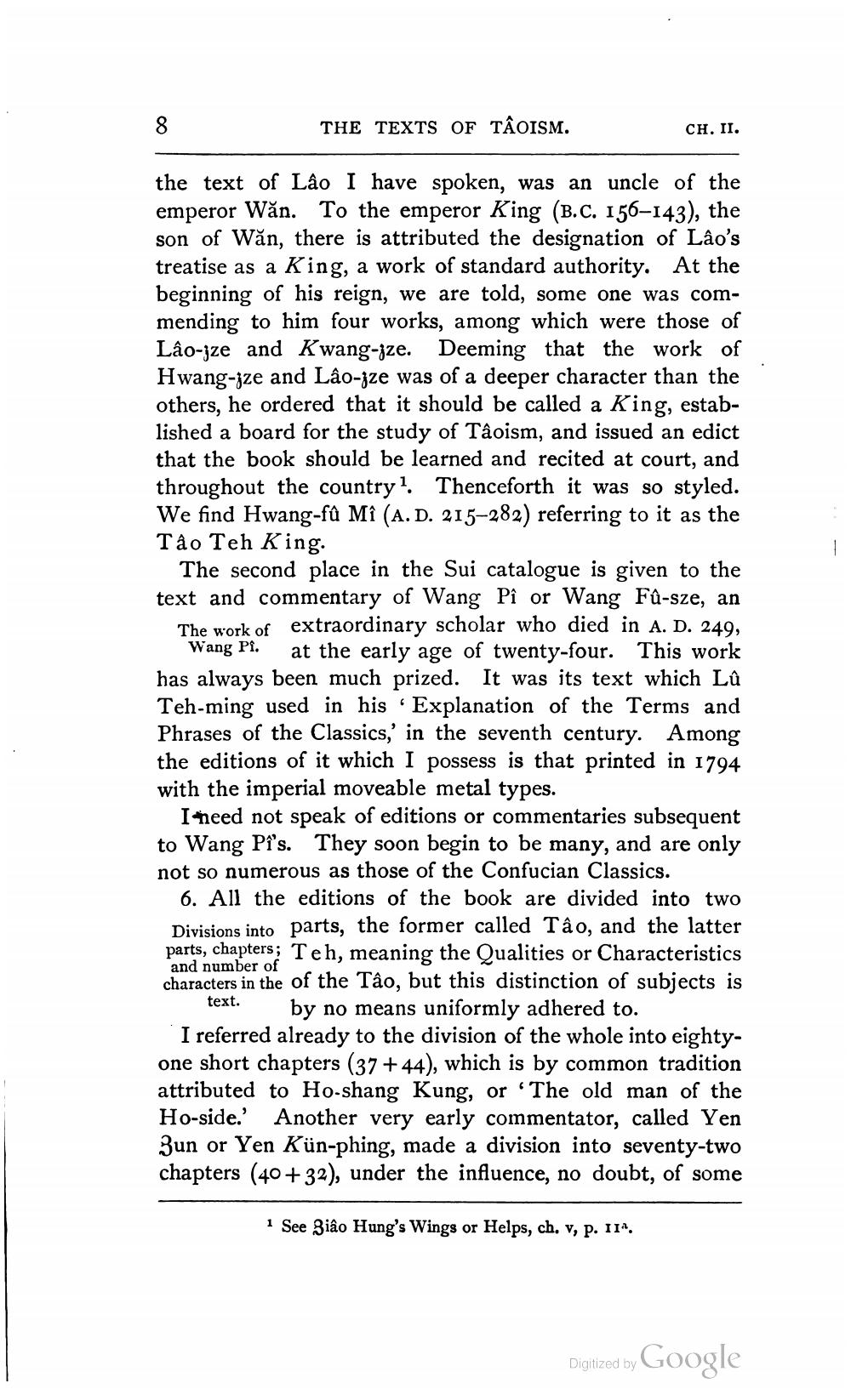________________
THE TEXTS OF TÂOISM.
CH.II.
the text of Lão I have spoken, was an uncle of the emperor Wăn. To the emperor King (B.C. 156–143), the son of Wăn, there is attributed the designation of Lâo's treatise as a King, a work of standard authority. At the beginning of his reign, we are told, some one was commending to him four works, among which were those of Lâo-jze and Kwang-jze. Deeming that the work of Hwang-jze and Lâo-jze was of a deeper character than the others, he ordered that it should be called a King, established a board for the study of Taoism, and issued an edict that the book should be learned and recited at court, and throughout the country. Thenceforth it was so styled. We find Hwang-fû Mî (A. D. 215–282) referring to it as the Tao Teh King.
The second place in the Sui catalogue is given to the text and commentary of Wang Pî or Wang Fû-sze, an
The work of extraordinary scholar who died in A. D. 249,
Wang Pi. at the early age of twenty-four. This work has always been much prized. It was its text which Lû Teh-ming used in his Explanation of the Terms and Phrases of the Classics,' in the seventh century. Among the editions of it which I possess is that printed in 1794 with the imperial moveable metal types.
Ineed not speak of editions or commentaries subsequent to Wang Pi's. They soon begin to be many, and are only not so numerous as those of the Confucian Classics.
6. All the editions of the book are divided into two Divisions into parts, the former called Tâo, and the latter parts, chapters; Teh, meaning the Qualities or Characteristics and number of characters in the of the Tâo, but this distinction of subjects is
text. by no means uniformly adhered to. ' I referred already to the division of the whole into eightyone short chapters (37 +44), which is by common tradition attributed to Ho-shang Kung, or 'The old man of the Ho-side.' Another very early commentator, called Yen Zun or Yen Kün-phing, made a division into seventy-two chapters (40+32), under the influence, no doubt, of some
1 See Ziâo Hung's Wings or Helps, ch. v, p. 11^.
Digitized by Google




